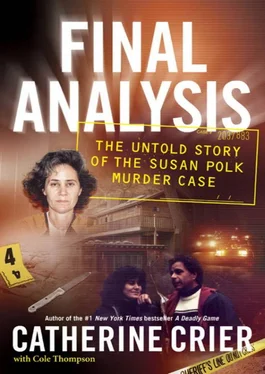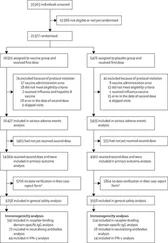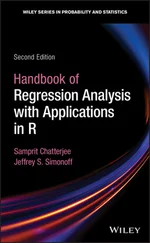Susan grew surly when the detective suggested that Felix had several restraining orders against her at the time of his death. “To your recollection, how many restraining orders do you think my husband had…?”
“Maybe two,” Costa replied with an air of confidence.
“Oh really? Two? How about zero?” Susan snipped.
“At least one I can think of,” the detective assured the court.
Susan retorted in a mocking tone to chortles from the gallery. “Oh you do, do you?” She got him to admit that he was incorrect in his belief that Felix had gotten some type of order of protection as a result of his 911 calls to police.
Her offensive continued when the detective said that, during the course of his investigation, he never learned that Felix was violent. Susan pointed to two letters she wrote detailing Felix’s alleged abuse; one that was found on her computer hard drive and another that police confiscated from a safe hidden beneath the wet bar in the master bedroom.
“How’d you guys get my safe open?”
“Again, I don’t know anything about a safe and I don’t know who might have opened it,” Costa said, claiming that he did not know about the safe.
Susan handed the detective a copy of the letter that she claimed was locked inside the safe. “You don’t recall that the letter contains a history of my husband’s threats, violence…”
“Objection!” Sequeira interrupted.
“Ms. Polk, this is inappropriate,” Judge Brady said, sustaining the prosecutor’s objection.
“Did you investigate whether my husband did the things in that letter? For example, did you investigate whether he raped me when I was a patient in his care?”
“Objection!” the prosecutor jumped up again.
Talking over Sequeira, Susan quoted the evidence code.
“Do not argue with me,” Judge Brady snapped.
Brady’s admonishment did little to deter Susan. Handing the detective a crime scene photo depicting the safe lying open on her bed, she asked, “It’s not likely I’d keep my safe on the bed.”
“No,” the detective agreed.
Once Susan jarred his memory with the photo and had him read the letter while on the stand, he vaguely recalled entering it in his police report.
“So how can you say nothing ever came to your attention about spousal abuse,” Susan demanded. She was visibly annoyed with Costa and his claims.
“No other sources indicated your husband was violent,” the detective retorted. He admitted that he had not read Susan’s complete diary. To do so would have violated the terms of the search warrant that detectives used to seize evidence from the house. Susan was incredulous, charging that detectives read the diary before the warrant was even signed.
In spite of this setback, Susan pressed on. At one point during the cross-examination, she trotted out police photos of the overturned ottoman that detectives claimed was kicked out from under Felix after he was struck on the head during the attack. Susan argued that the position of the ottoman, upside down and on the opposite end of the living room from its cover, proved her claim that Felix had used it as a weapon and thrown it at her early in the fight. Marching to an easel set up in the courtroom, she sketched a diagram of how police claimed to have found the furnishings. To Susan, it was apparent that officers had “staged” the crime scene.
“Why is the ottoman cover across the room from the ottoman at the ‘so-called’ crime scene?” Susan asked Costa. She was so thin in her black slacks that it looked as though they would fall from her hips if she moved too quickly.
Costa studied the photo. “It was due to the fight.”
“Is an altercation between a 110-pound woman and a 170-pound man a fight?”
“Yes,” the detective replied matter-of-factly.
“And how much do you weigh,” Susan asked.
“Too much,” Costa grinned. “Two-hundred-and-fifty-pounds.”
Susan asked that the clerk and bailiff bring out the ottoman for jurors. She continued to suggest that police had moved it in an attempt to bolster their theory of events in the guest cottage that October night.
Susan’s own omissions would prevent her from questioning Costa about the pepper spray she said she used on Felix that night. More than two years passed before she told authorities about the spray, and the window of opportunity for effectively testing the ottoman for residue had come and gone. Had the authorities been able to find evidence of the chemical, it would have given credence to Susan’s argument that Susan felt threatened by Felix that night, and she went to the guest house armed with the spray for protection.
Unable to use that argument, she was forced to focus on the ‘inconsistencies’ in the crime scene. She asked again about the bloody footprints she believed were made by “two right feet.”
“I think you’re wasting your time,” the detective told her. “It’s a question for a criminalist.”
“Oh really, you’re a detective. You’ve accused me of murder. I’m asking you for your professional opinion as a detective.”
Refocusing Costa’s attention on the photo, Susan intimated that the only way the bloody prints could have been made is if somebody had taken a shoe, “stuck it in some wet blood and then stamped them on the floor.”
Still, the detective maintained that he did not see “two right feet.”
Unwavering, Susan pointed to blood found on the soles of Felix’s feet and inquired as to why investigators hadn’t found any bloody footprints from him on the floor of the living room.
“There was nothing in this case that led me to believe that this scene had been staged,” Costa huffed.
Late Wednesday afternoon, Susan learned that Costa was asking to leave the trial so that he could refill a medical prescription for an unspecified condition. Although she had been questioning him for two full days, she insisted that she needed one more day to complete her cross-examination. Susan recommended that Costa have the prescription called in to a local pharmacy.
The detective complained, saying he didn’t feel he should have to do that. He also pointed out that the questions she was now posing were out of his area of expertise and would be better answered by a criminalist.
Despite Costa’s argument, the judge told him to contact his doctor about phoning in the prescription so that Susan could continue the cross-examination.
“Well, what’s his condition?” Susan demanded, after the matter was resolved.
“It’s completely irrelevant,” the judge told her.
“I think it’s relevant, I mean, is he on psych meds?”
“It’s a physical condition,” the prosecutor jumped in. Sequeira was anxious to move the case along to accommodate the out of town witnesses he had waiting to testify.
“Is it visual?” Susan wanted to know.
“It’s totally irrelevant and I don’t want her to make references to it in front of the jury,” Sequeira told Judge Brady.
“I had no intention of doing that, but now I’m curious. This IS a deviant prosecutor,” Susan charged.
Her remark elicited laughter from the gallery.
“All right, that’s it,” Judge Brady warned. “We’re done. Ladies and gentlemen of the gallery, this is not for entertainment.
“Mrs. Polk, there will be no mention of this issue in front of the jury.”
By Friday afternoon, Sequeira was asking Judge Brady for help. “I’m at my wits end,” he announced. “At this point, it’s becoming absurd. She won’t follow the rules. She won’t stop interrupting. I don’t know what else to do. I’m asking the court for guidance.”
Finally, Sequeira tried helping his opponent. Susan kept questioning about a March 16, 2001, letter in which she alleged domestic violence. The judge had ruled the letter inadmissible when offered through the detective but explained that Susan could enter it later during her own testimony.
Читать дальше











